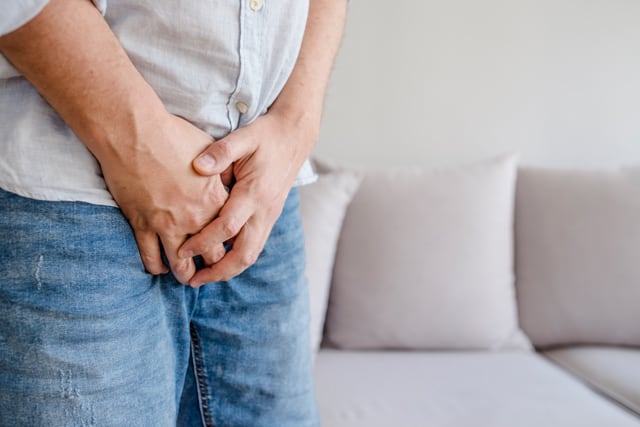Urinary incontinence in men? Put an end to this phenomenon!
We have a revolutionary and non-invasive solution that will change your life!
A combined treatment of a revolutionary electromagnetic chair that trains and strengthens the pelvic floor muscles + the close accompaniment of a pelvic floor physiotherapist that will save you long months of grueling treatments, in just 6 sessions!
The service is provided at the Pelvic Floor Treatment Center, Tel Hashomer, 4 Gildsagim St., Ramat Gan
A pelvic floor physiotherapist will accompany you throughout the series of treatments
The treatment is non-invasive and takes place fully clothed
The treatment is recognized by Clalit Perfect/insurance companies and they provide reimbursements according to your policy. We will accompany you in receiving the refunds to which you are entitled


היום תורך לשנות את חייך! פגישת ייעוץ מקצועית + טיפול ניסיון עם הרבה ערך For only 149 ₪!

Our Doctors
Dr. Gandhi Bittman

Specialist in General Gynecology, Urgynecology and Pelvic Floor
Dr. Bittman has been an expert in gynecology and urogynecology at Sheba for over 20 years. Performs fistula repair surgeries (the only one in the center of the country that does this using the vaginal method), gynecological surgeries using endoscopic methods (laparoscopy and hysteroscopy), innovative laparoscopic surgeries to correct pelvic organ prolapse, and surgeries to correct urinary leakage.
Our Physiotherapists

Yifat Goldberg - Physiotherapist for pelvic floor rehabilitation
Holds a bachelor's degree in BPT physiotherapy,
She has clinical experience in treating a variety of pelvic floor problems in women and men, orthopedic and vestibular rehabilitation.

Dr. Dana Poudel - Pelvic Floor Physiotherapist
Dr. Dana Poudel is a PhD specialist in physical therapy from Northwestern University Chicago, USA.
Dana has extensive experience in treating pelvic floor problems in women and men, and even combines yoga exercises in the clinic as a holistic treatment for a variety of problems.
How does it work?

1. Schedule a consultation and adjustment meeting, which includes a medical examination by a physiotherapist specializing in pelvic floor + experiential treatment

2. If you are suitable, schedule a series of treatments using the eChair

3. Embark on a new path with strong pelvic floor muscles that prevent annoying urine odors

4. We will accompany you in receiving reimbursements from your health plan / insurance company
Urinary incontinence in men
Some medical conditions are more associated with women than men, and vice versa – some of them are actually more characteristic of the male sex than the female sex. When it comes to urinary incontinence, it is usually an issue that characterizes the female population in Israel in particular and the world in general. It can be pointed out that a very high percentage of women, and to be precise, about 30%, deal with the problem of urinary incontinence, but studies conducted over the years indicate that quite a few men also suffer from urinary incontinence. Urinary incontinence in men may be a slightly less talked about topic, but it is important to understand that it is definitely an existing issue. Since there is less present discourse around the subject, we decided to tell you some facts about urinary incontinence in men that you are not sure you knew, and to expand a little more on the subject that may definitely meet you one day.

Urinary incontinence in men – yes, it does happen
So it is very possible that some of you are now raising an eyebrow and wondering how this can be, but yes – in practice there is a significant percentage of men who suffer from urinary incontinence. Urinary incontinence in men can have a wide variety of causes, which we will expand on later, but in the meantime, if we look at the dry data, we will find that 5% of young men suffer from urinary incontinence, compared to much higher figures among older men aged 65 and over, who stand at between 10% and 20% of urinary incontinence knocking on their doors.
There is no doubt that this is data that cannot be ignored and should make every man aware of this matter, which he may encounter in the near or distant future.
Breaking down the data into conclusions about urinary incontinence in men
If we look at the data in depth, we will understand that there are all kinds of causes of urinary incontinence in men, and as promised – it is time to talk about them and break them down in detail.
One of the most common reasons for urinary incontinence in men lies in the various diseases they face. Various health conditions can directly affect urinary incontinence in men, just as it does in women, and lead to a change in the function of their bladder.
What diseases are we talking about?
Urinary incontinence in men can be due to a wide variety of diseases. Among other things, we can find Parkinson's disease, which has a direct connection to a person's cognitive function and accordingly also to his bladder activity; Alzheimer's disease, which has a direct effect on brain function, sending actions to the body and disrupting the urinary system, and diabetes, which also affects all body systems, including both the urinary system and multiple sclerosis.
Unexpected events that occur in life that can lead to urinary incontinence in men
The life of each and every one of you is full of surprises and unexpected cases, which can lead to all kinds of different reactions of the body, the brain, and a variety of routine actions that suddenly become very difficult to perform.
For example, various strokes can have an impact on urinary incontinence in men, creating this phenomenon in them even though they have never dealt with it. Strokes directly affect the nervous system, and since it is responsible for the function and activity of the bladder – these events will have a corresponding effect on the formation of urinary incontinence in men.
The relationship between age and urinary incontinence in men
Just like what happens with women, men also get older over the years, and their advanced age brings with it a variety of phenomena that were not part of them before. Like women, men who reach older ages may also begin to suffer from urinary incontinence as an inevitable part of their puberty.
Age has a clear effect on the onset of urinary incontinence. Just as old age will bring wrinkles to the skin of the face, for example, so it begins to affect a variety of hormones and muscles found in the body. Among other things, old age will cause loosening and weakening of the pelvic floor muscles, which are an integral part of both women's and men's bodies, and accordingly will lead to situations of urinary incontinence.
Urinary incontinence due to excess weight
The problem of obesity is one of the most serious and common problems in Israel in particular and in the world in general, and stems from all kinds of factors related to technology, processed foods, 21st century habits, and more. All of these have an effect, of course, on the whole issue of urinary incontinence in men and in general.
Men who are overweight are men who are at a higher risk of suffering from urinary incontinence, both at very young ages and certainly at older ages, when the body is much less held and healthy. The excess weight accumulates in the lower abdomen, right next to the area where the bladder is located. The excess weight will create pressure on the bladder, and accordingly will cause urinary incontinence over which you will not be able to have any control of any kind.
Taking certain medications can be associated with urinary incontinence in men
Many studies have found that there is a connection between urinary incontinence in men and taking medications such as antidepressants, a variety of painkillers, and more. Since these are chemical drugs with different and varied compounds, they can affect physical function directly, and accordingly also leave their mark on the whole issue of urinary incontinence.
Other conditions of urinary incontinence in men that you should know
Beyond all this, you can notice two other common situations surrounding urinary incontinence in men:
- Urinary incontinence – Many men who feel the need to urinate do not have time to get to the toilet cubicle before they have urinary incontinence. Of course, this is a particularly problematic situation, but the longer the long-term coping with it, the more the men who suffer from it will be able to adapt to themselves the tools to deal with it successfully.
- Stress incontinence – Another particularly common situation is exertion urinary incontinence. This situation occurs in both men and women, and it creates a situation in which actions that strain the body will also be accompanied by urinary incontinence. Among other things, you can notice actions such as jumping, running, skipping, coughing, sneezing, or even laughing that can lead to exertion urinary incontinence.
Night urinary incontinence in men
When we talk about urinary incontinence at night in men, we are talking about an unpleasant situation at all. It is enough that urinary incontinence is already a complex and unpleasant condition, all the more so for men of young ages or older ages feel very embarrassed by urinary incontinence that occurs during their sleep.
Night urinary incontinence in men can be dealt with in a variety of ways, the first and most immediate of which is the use of various absorbent products.
Urinary incontinence in men after prostate surgery
Unfortunately, prostate surgery is not a rare surgery among the male population, both nationally and globally. This is a surgery that has undergone many developments over the years, so today it offers an effective solution to a variety of problems, diseases and inflammations related to the prostate, but as advanced and effective as it may be – it certainly brings with it various side effects, including urinary incontinence.
Urinary incontinence in men after prostate surgery may occur due to intra-abdominal pressure, and may occur either near the end of the surgery or several days, weeks, or months afterwards. Either way, this is a complex and very unpleasant situation. The reason for this is that the removal of the prostate affects the urethral sphincter, and accordingly – urinary incontinence occurs.
Urinary incontinence in men – the physical dimension of the problem
There is no doubt that in light of all this, it can be understood that urinary incontinence in men is a big problem among them. The most prominent dimension surrounding the problem is the physical dimension, but as we will see below, it is certainly not the only one. In the physical dimension, men who suffer from urinary incontinence suffer from wetness throughout different parts of the day – from at night during sleep to their working hours in the morning or afternoon. These men, who know that urinary incontinence can occur at any moment, change the nature of their lives and their entire agenda, just to avoid a situation in which they are helpless and not equipped with an available and immediate solution.
These men become highly dependent on nearby toilet cubicles, and may also avoid a variety of social activities in order not to take the risk of urinary incontinence suddenly popping up out of nowhere. Beyond that, these men may develop an obsession around toilet cubicles, and not leave the house without visiting them at least several times. All of these are, of course, also the result of the psychological dimension that we will now discuss.
The Mental Dimension of Urinary Incontinence in Men
No less important than the physical dimension is the mental dimension. The human psyche is affected by all the changes that occur in his life, and as part of this, it is certainly possible to point to urinary incontinence in men as a very significant change. Within this dimension one can discern the most complex feelings and even mental upheavals that occur within the man. Among other things, he may suffer from states of depression, great sadness, frustration, despair, helplessness, and even want to isolate himself and stay away from family and friends who usually surround him.
There is no doubt that the effect of urinary incontinence in men on the mental dimension is particularly severe, and it has the potential to be very destructive.
Is there light at the end of the tunnel?
So yes, things may sound tragic and inexplicable, but that's not the case. It is important to understand that urinary incontinence in men has excellent solutions, whether in the early stage, which can prevent its formation, or in the stages when it already appears and must be dealt with in order to eliminate it.
If so, it can certainly be said that there is a light at the end of the tunnel, and all that needs to be done is simply be aware of the matter and act accordingly. So let's start doing it together?
Urinary Incontinence in Men: Side Problems – Solutions on the Table
If until now we have talked about the various problems, now is the time to talk about the different solutions to them. Urinary incontinence in men, just like in women, is definitely not a fait accompli, on the contrary – it is a matter that can be treated and is best done as soon as possible.
First and foremost, it is important to understand where the problem lies. If incontinence in men is due to excess weight, for example, it goes without saying that a process of losing weight as a result of improving dietary habits and adopting new fitness habits is a critical procedure that can either solve the problem altogether or at least reduce it. The same thing works with urinary incontinence in men that results from taking various pills, which may be worth checking out for alternatives.
All the ways lead to urinary incontinence in men – what is at the heart of the matter?
In fact, in order to understand what is actually happening here, it is important to understand that urinary incontinence in men stems from the main issue – the weakening of the pelvic floor muscles, and their inability to function accordingly. Proper functioning of the pelvic floor muscles, for example, will lead to complete control of the sphincters, and accordingly there will be no reason for urinary incontinence. On the other hand, inappropriate function that originates from muscle weakness will be expressed in urinary incontinence. So what's the solution to this issue, you probably ask? Well, strengthening the pelvic floor muscles, of course.
Strengthening the pelvic floor muscles and urinary incontinence in men – the important things to know
This is an issue that cannot be ignored in any way – strengthening the pelvic floor muscles is a critical, significant and crucial part when it comes to dealing with urinary incontinence and avoiding it. Many people today perform exercises to strengthen the pelvic floor muscles as an integral part of their daily lives, and this can exist thanks to its simplicity, accessibility, and minimal effort that it requires.
How do you practice strengthening the pelvic floor muscles?
There are quite a few exercises that lead to strengthening the pelvic floor muscles, all of which focus on one main issue – contraction and relaxation of the pelvic floor muscles, in order to create complete control of the area. The exercises do not require prior preparation of any kind, and there is no need to prepare with special accessories in order to perform them. All you have to do is simply use a towel or mattress to isolate yourself from the floor, and follow the instructions.
Right here below we have compiled six different exercises that can help you while practicing, so let's see how you can do it completely on your own, from anywhere and at any time:
- The first exercise is performed while lying down, with the goal being to raise and lower the pelvis and buttocks from the mattress up and back in a controlled manner. In order to do the exercise, lie on the mattress with your arms spread out to your sides and your legs bent. From this starting point, lift your buttocks upwards while contracting the pelvic floor muscles, reach the climax and lower your buttocks back towards the mattress gently and with a controlled movement. The exercise can be performed in two or three sets, each consisting of between 10 and 15 reps.
- The second exercise is also called the elevator exercise, and it is one of the most common exercises that exist in the pelvic floor world. As part of this exercise, lie on the mattress with your arms spread out to your sides and your legs slightly apart. From this starting point, the pelvic floor muscles should be contracted slightly, more contracted, and eventually fully contracted, and then relaxed. Here, too, you should perform the exercise in several repetitions in several separate sets.
- The third exercise is performed sitting, so sit on your buttocks with your hands supporting your body behind your back, and your legs apart. Gather your abdomen inwards, and with the support of your hands, lift your buttocks upwards, contracting the pelvic floor muscles. At the end of the exercise, lower your buttocks back to the mattress, relax and repeat the exercise over and over again.
- The fourth exercise is an exercise that is performed on a six-legged position, with the knees in a vertical line straight to the waistline, while the palms are in a vertical line straight to the shoulder line. As part of this exercise, the back should be arched while contracting the pelvic floor muscles, and then curled it while releasing the muscles.
- The fifth and excellent exercise is performed standing, with one leg remaining stable on the floor while the other leg is raised upwards by bending the knee, until reaching the pelvic line. During the second leg swing, the pelvic floor muscles should be contracted, and when they are placed back on the floor, they should be released. The exercise can be performed in several separate sets, and alternate between the legs between repetitions.
- The sixth and final exercise is performed in an oriental sitting, while relaxing the muscles of the buttocks and thighs and contracting the pelvic floor muscles upwards. In this exercise, you should imagine as if someone is "pulling" you upwards, and accordingly perform the contraction movement with the pelvic floor muscles.
How soon will the exercises show their signs?
As you probably understand for yourself, these are fairly simple exercises, some of which can even be performed while sitting at a meal or while working. The exercises should be done every day, and you don't need to spend too much time on them – just repeat them in a way that is comfortable for you.
However, it is important to understand that whether you perform the exercises on a daily and intensive basis or not, it will take them quite a while to show their results. From these exercises you get Kegel contractions – contractions of the pelvic floor muscles, and in each such exercise you can only do a few dozen such contractions. In order to affect urinary incontinence in men and in general, several tens of thousands of Kegel contractions are required, so it may take many months before you see results.
Is there a faster and more effective solution than these exercises?
Until a few years ago, the answer to this question was no, but in recent years, solutions have emerged that are not only faster and more effective than the exercises we mentioned, but also much more comfortable and pleasant for you. We have the best solution at MyDoctor, and we're more than happy to tell you about it. So get to know the eChair – the electromagnetic chair that we market exclusively in Israel, and now you too are invited to enjoy its great advantages!
All the details you didn't know about the eChair
So what is an eChair, you may be asking? Don't worry – that's exactly what we're here for. This wonderful electromagnetic chair is designed to replace pelvic floor muscle strengthening exercises, and make the whole subject much simpler, available and faster for you.
Our special chair is at the center of a series of treatments offered to strengthen the pelvic floor muscles, whether to prevent or deal with urinary incontinence. The series of treatments consists of six separate sessions, each of which is only 28 minutes long. As part of each session, all you have to do is simply sit on the chair and let it do its thing. So what exactly does this mean?
The results of the eChair – get ready to rub your eyes well
When you let the chair do its thing, what it will do is reach 11,000 Kegel contractions in just one session. Yes, you heard it right – the amount of contractions you had to work for for months through your independent practice becomes the same amount you get in just one session. Sounds delusional? You're right – it's crazy how good it is!
At the end of the series of sessions, when your body has received a wonderful dose of tens of thousands of Kegel contractions, you will feel how you are regaining control of your sphincters, and saying goodbye to urinary incontinence for a very long time. Of course, at the same time, it is important to remember that this is not an invasive or intimate treatment – you stay dressed throughout the treatment, and can deal with your affairs such as reading newspapers and magazines, or correspondence on your mobile phone with people close to you. Sounds good, right? Wait – it's not the end yet.
MyDoctor's eChair Service
All this goodness joins our excellent service at MyDoctor . With us, you can receive the treatments immediately available, without unnecessary waits and without an exhausting, bureaucratic and tiring road. As part of the treatment, you will receive guidance from a pelvic floor physiotherapist who will meet you, create a personal and unique profile for you according to which the treatments will be performed, and listen to everything you want to say and tell on the subject.
Of course, all of these are given to you at fair prices, which bring you a greater value than you might think at the moment.
So what do we do now?
In order to enjoy all of this and ensure a much quieter and incontinence-free life, all you have to do is simply call us at 072-397-2-386 and schedule a series of treatments for yourself as soon as possible. Our service representatives will be happy to give you additional information that you may be missing at the moment, and to answer any questions with patience and attentiveness.
This is the time to regain control and avoid the serious effects of urinary incontinence on your lifestyle and daily routine. Come on, we're waiting for you!
Want to learn more about urinary incontinence in men?
Our team of experts will be happy to assist you

Fill in your details and we will get back to you as soon as possible!


